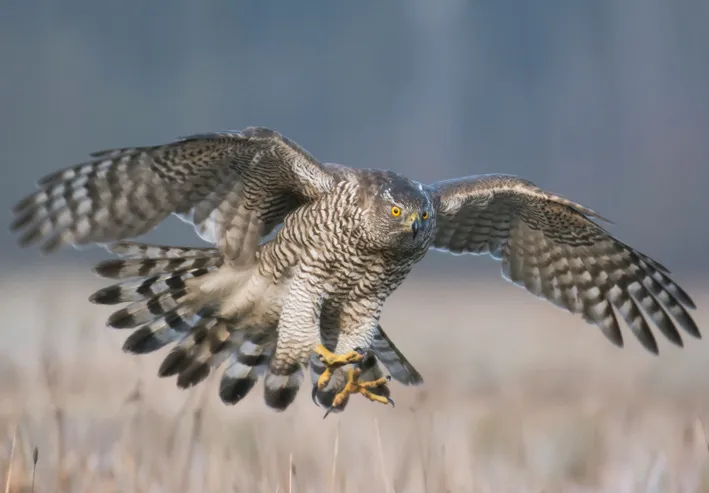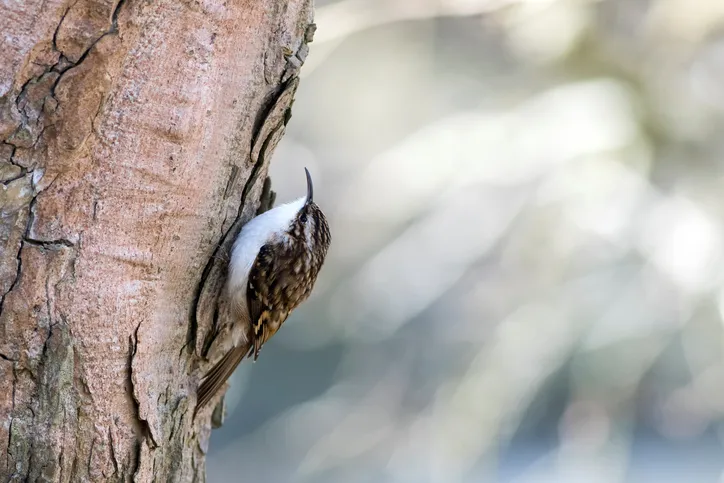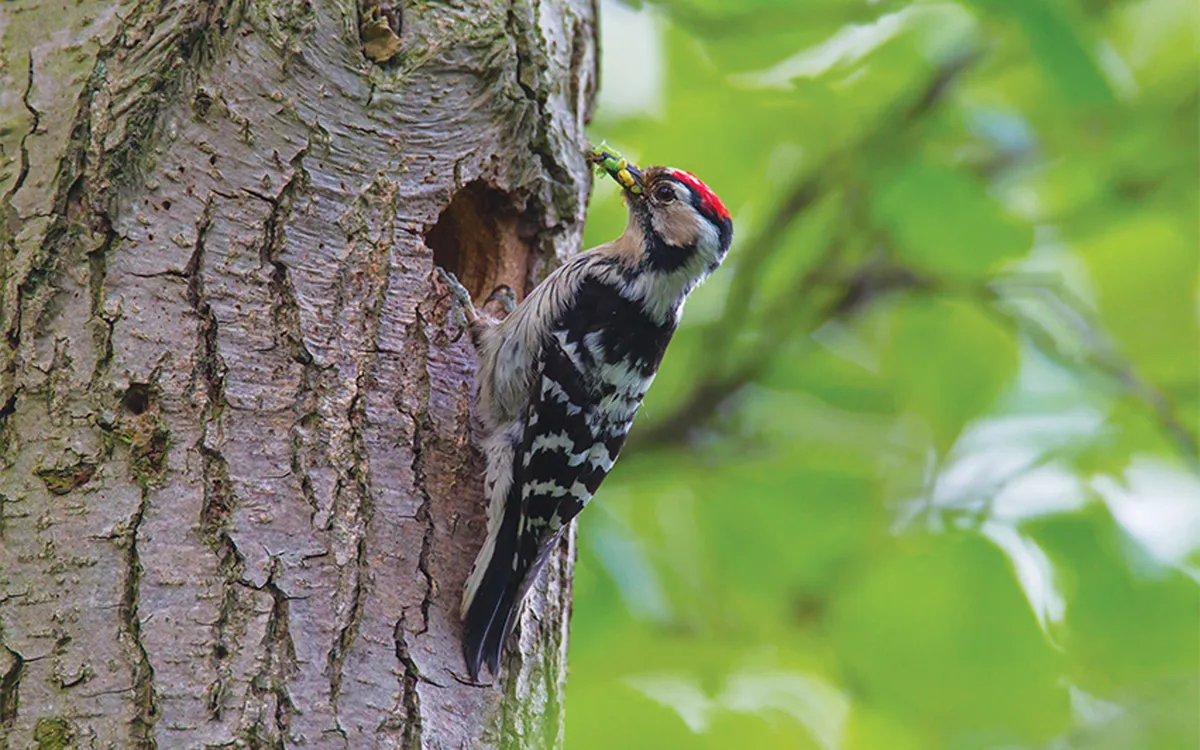Ynys-hir is a varied environment of grassland, wetland, reed swamps, peat bogs, mudflats, saltmarsh, alder carr and oak woodland, caressed by the swirling Afon Dyfi and bound by mountains and hills.
Goshawks power in from nearby forestry to swipe an occasional lapwing; hen harriers cruise the marsh; grasshopper warblers trill like shrill violins over the grassland; and spring migrants raise broods in the woods. It’s a landscape reminiscent of the later Mesolithic Age. Appropriately, then, having made Britain their home 10,000 years ago as oak and hazel woodlands replaced the tundra pines, lesser spotted woodpeckers are resident.

Wildlife at Ynys-hir
It’s not just young deciduous forest that lesser-spots seek, but linking corridors of mature and decaying woodland, too. In winter, the woodpeckers rely on wood-dwelling larvae, prized from thin dead twigs in living trees, and in spring they hunt for caterpillars to feed their young. This mixed landscape is vital, but so is space, with each couple requiring as much habitat as 500 pairs of blue tits.
At the heart of Ynys-hir, between the saltmarsh and hills, is an Atlantic sessile oak wood. In May, drifts of bluebells add fragrance to the wood-scape of moss and twisting oak boughs, already vibrant with light and new leaves. Permanent residents, such as the lesser-spots, goldcrests and treecreepers, are joined by spring migrants: redstarts with rufous underparts, wood warblers with songs like tinkling waterfalls and pied flycatchers with their dinner-jacket plumage.

Walking at Ynys-hir
Well-marked trails lead from hide to hide through the reserve. Head to Domen Las to see little grebes, then on to Marian Mawr and Saltings for egrets, hen harriers and a backdrop of hills. Turn south to the wetlands and Ynys Feurig hide, looking out for lapwings, then return across boardwalks, passing Ynys Eidiol on your way to the woodlands. Here you’ll see pied flycatchers, redstarts and, if you’re lucky, the lesser-spots. By May they’ll be nesting, offering visitors an insight into the lives of these diminutive and fugitive canopy-dwellers.
Lesser spotted woodpeckers at Ynys-hir
Red-listed lesser-spots are sparrow-sized. They’re less distinctive than the thriving greater-spots, with barred black and white wings and quieter drums. Male lesser-spots have red heads, but not red underparts.


